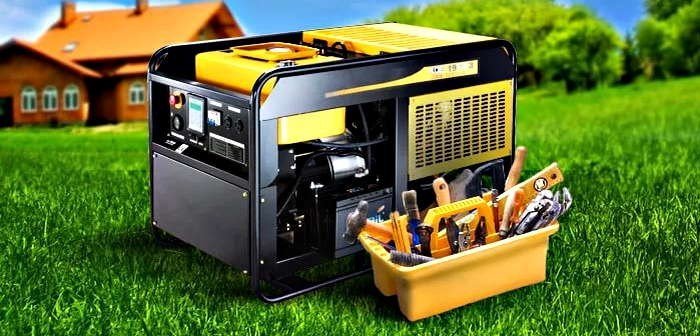Portable stand-alone alternators allow users to provide power to electrical appliances for the period of short-term emergencies in the electrical network or in places where, for whatever reason, constant networks are not connected. The industry produces many types of units that differ not only in power parameters, but also in the type of generated current, many of them are available on the site https://smk-ksk.ru/catalog/benzogeneratoryi-tss . Regardless of technical characteristics, generators are divided into two large groups: single-phase and three-phase.
Differences between three-phase and single-phase voltage
- Single phase. The vast majority of household appliances, power tools and other equipment are connected to such a source. The output is given two outputs: phase and zero. The voltage between them is 120 V, the frequency of voltage change from "+" to "-" 50 times per second, oscillations occur along a sinusoid.
- Three-phase. Technically more complex units, the generated EMF with the same frequency is shifted relative to each other by a phase angle of 120 °. Voltage between phases 380 V, between phases and zero 220 V.
Regardless of the type, all devices have the same elements: drive motor, generator and control and monitoring unit. The magnetic fields that produce EMF are stationary and mobile (synchronous and asynchronous). Synchronous devices can withstand short-term triple excess of the maximum power of the connected consumers. Asynchronous under such conditions can completely fail. In order to prevent negative situations, a power reserve should be made for starting currents when connecting devices with electric motors.
Single phase generators
It is allowed to connect only consumers designed for a voltage of 220 V, most often they are used only for lighting and supplying household consumers with a relatively small total power. The voltage and frequency of the current are controlled by a special electronic or mechanical control, which ensures stable performance when the load changes. Fluctuations in parameters do not exceed ± 10% of nominal values.
The advantages include relatively low cost and low fuel consumption per unit of time. The latter characteristic largely depends on the total connected power of electrical energy consumers.
Three-phase generators
The stator has three windings, each offset 120 °. For the production of EMF, a permanent magnet or an electromagnet powered by the unit can be used. For an electromagnet, the voltage is pre-rectified. Three reverse zero ends of the windings are connected to one wire, which is considered to be zero. Line voltage 120 V, phase 380 V. The rated power of each phase is 1/3 of the total, this must be taken into account when connecting single-phase consumers.
Benefits:
- balance of the system in terms of loads increases the service life of the unit;
- the ability to connect industrial consumers of high power;
- power supply of three- and single-phase consumers is allowed.
Disadvantage - the cost of such generators is higher than single-phase.
All units have special protective fittings and are started with a manual or electric starter. If it is necessary to provide uninterrupted power supply, generators with automatic start are used - a special voltage control unit in the network sends a signal to the start device.




